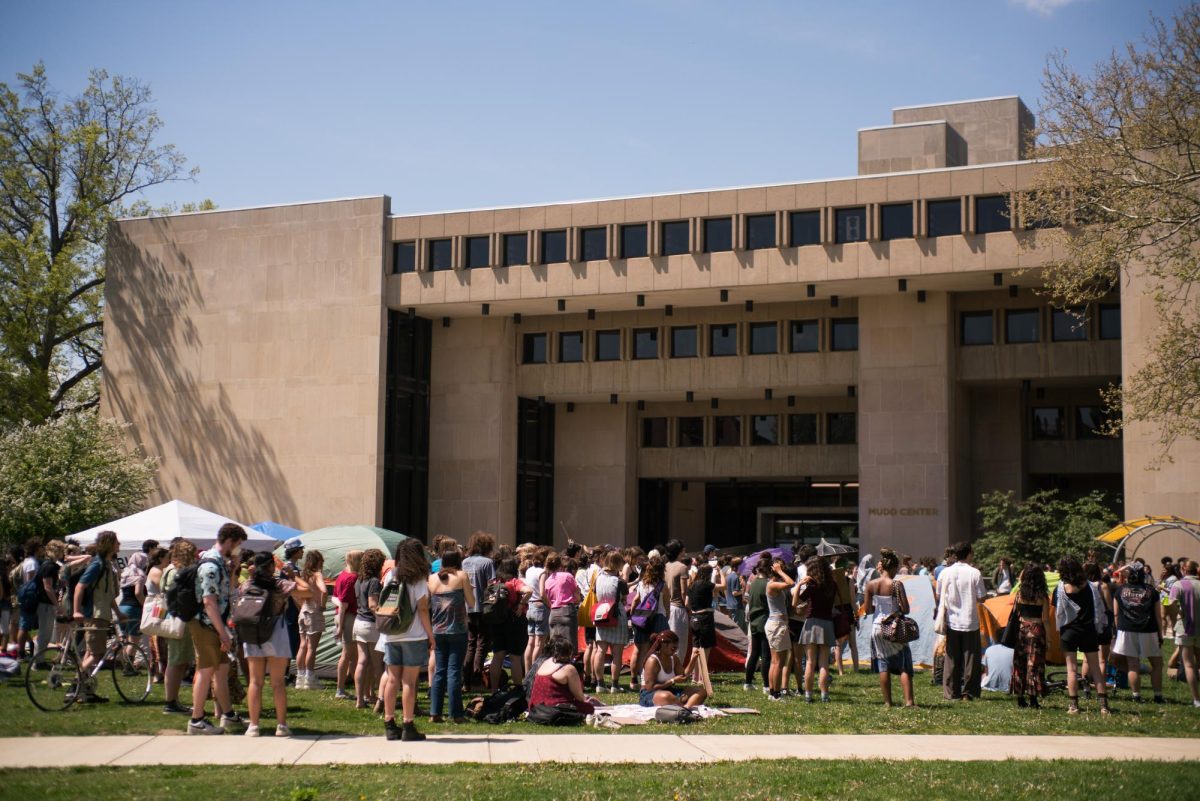As someone from Washington, D.C., where the lack of voting representation is an everyday reality and politics are very different, I was immediately drawn to Ohio politics and the state level voting process. This interest deepened during my time at The Oberlin Review, where I delved into local politics and covered various local elections. As an Oberlin student, I’ve had the privilege of witnessing several elections, on both the local and state level. However, it has become increasingly evident that many citizens in Oberlin, and across Ohio, are deeply dissatisfied with the voting process. There are a range of significant issues plaguing our voting system, but letters to the editor in various local newspapers, including the Review, and conversations with community members have brought to light an especially pressing concern: Ohio’s gerrymandering problem.
For those who may not be familiar with the term, gerrymandering refers to the manipulation of political district boundaries to favor one political party or candidate over another. In Ohio, the method of gerrymandering most commonly used is known as “packing.” This involves concentrating as many voters of a particular party as possible into the smallest number of electoral districts. By doing so, the party in favor can gain more seats across the remaining districts, thereby amplifying its influence in higher-level elections and overall voting processes. The main issue with this practice is that it ultimately leads to a lack of fair representation, especially for voters who are packed into a limited number of districts. As a result, the voices of these voters are not accurately reflected in election outcomes, leading to persistent inequalities in policies and representation. A good allegory to how gerrymandering works is comparing it to a fixed sports game. Just as the tournament organizers manipulate team rosters to ensure their preferred team wins, like isolating their strongest players onto one team instead of equally distributing them across teams, gerrymandering “packs” voters into certain districts to diminish their influence in the broader electoral process, allowing the favored party to dominate with less opposition.
Another significant problem with gerrymandering is the reduced accountability of politicians. When districts are deliberately redrawn to favor one party, the candidates and policies of that party feel less pressure to consider the opinions of voters outside their base. This disempowers voters, undermining their influence and compromising the overall integrity of the political process. With reduced competition and fewer restrictions, candidates from other parties are often discouraged from running, knowing the overwhelming advantage held by the dominant party.
While Ohio’s 2012 district map was also criticized for gerrymandering, the current map has introduced new issues. For instance, Democrats have lost a representative seat, and other Democratic districts have been broken up and reconfigured into majority-Republican districts. A particularly troubling aspect of the new map is its division of minority communities, especially Black communities, into different districts, which dilutes their voting power compared to white voters.
How does this affect Oberlin? Oberlin is part of Ohio’s 54th House District and 5th Congressional District. In 2021, Governor Mike DeWine introduced a new congressional district map, which moved Oberlin out of Jim Jordan’s 4th District and into Bob Latta’s 5th District. While both districts are predominately Republican Oberlin, a liberal-leaning area, still finds itself isolated from other Democratic districts; the map itself missed an opportunity to promote voter equality. It’s easy to understand why many voters feel their vote carries less weight. This makes it challenging to feel as though our votes matter in the broader electoral process, and due to gerrymandering, our districts fail to reflect the communities within them.
This is why the upcoming election is crucial for protecting our rights as voters. If you are voting in Ohio this year, you have the opportunity to support the proposed amendment that focuses on the creation of an Independent Redistricting Commission. The amendment, featured on our ballot as Ohio Issue 1, the Establish the Citizens Redistricting Commission, represents a significant step toward ensuring fair representation. The Independent Redistricting Commission would function as a separate body from the legislature and be responsible for drawing district boundaries for congressional and state elections. This voter-focused reform would ensure that our voices play a central role in determining how electoral districts are drawn. The commission must consider population, racial minorities, and pre-existing local communities.
Additionally, the IRC would host public hearings and provide other opportunities for public input, ensuring citizens’ voices are heard. A crucial aspect of this proposal is that the IRC must also explain its mapmaking decisions and incorporate public feedback into its final plans. The Independent Redistricting Commission prioritizes the people, and in turn, we must prioritize it on the ballot.
It’s important to stress that this issue transcends party lines. While it’s true that gerrymandering in Ohio often favors the Republican Party, this advantage is not guaranteed to last forever. As time passes, the Democratic Party could very well employ the same tactics as they have in other states. Regardless of your political affiliation, gerrymandering is a problem that affects us all. It diminishes our collective ability to participate in a fair election process and undermines the very foundation of democracy. So, regardless of your political position, if you care about ensuring the fairness of our democratic system — specifically our voting process — I urge you to vote yes on Ohio Issue 1, the Establish the Citizens Redistricting Commission. Voting yes will lead to the prioritization of our voices and, most importantly, our votes.











